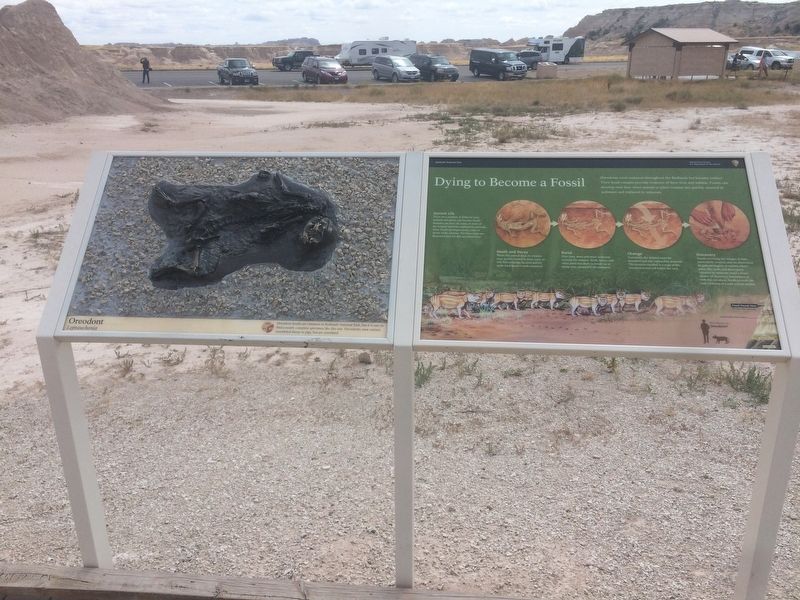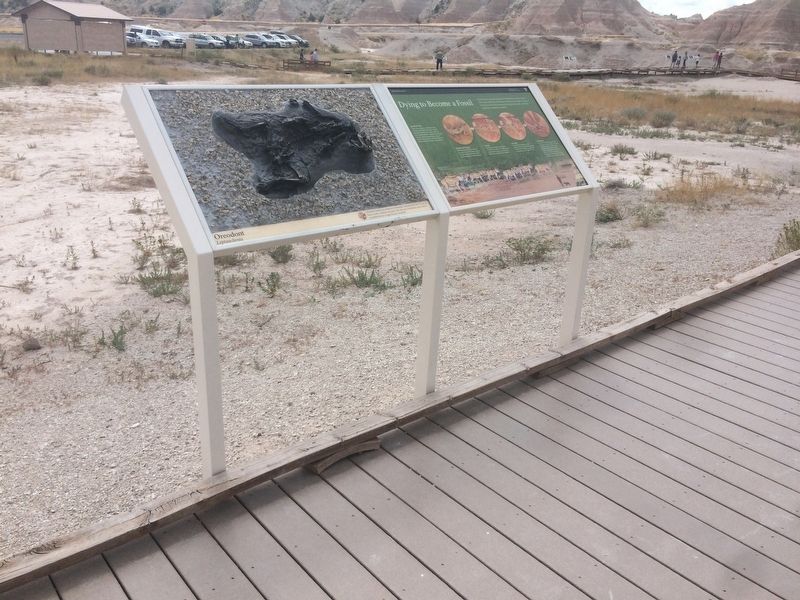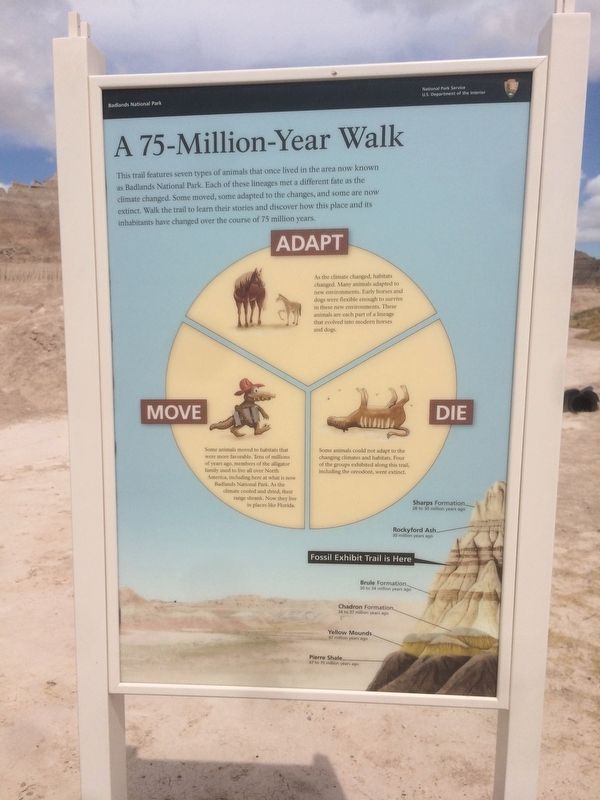Near Interior in Jackson County, South Dakota — The American Midwest (Upper Plains)
Dying to Become a Fossil
Oredonts were common throughout the Badlands, but became extinct. Their fossil remains provide evidence of their lives and habitat. Fossils can develop over time when animal or plant remains are quickly covered in sediment and replaced by minerals.
Ancient Life
There are a number of different ways animals and plants can become fossils. Remains can have all , some, or none of the original materials replaced by minerals. Some fossils are impressions, casts, or molds of the remains. The basic steps are illustrated here for the oredont fossil.
Death and Decay
When this animal died, its remains were quickly buried in mud, sand, or soil. Soft elements decayed quickly while hard bone or teeth remained.
Burial
Over time, more and more sediment covered the remains. Teeth, bones, and other parts less likely to break-up or decay were encased in the sediment.
Change
Eventually, the skeletal material dissolved and was replaced by minerals. This process resulted in a copy of the oredont preserved within the rock.
Discovery
Fossils surviving the ravages of time, particularly erosion, may be discovered by paleontologists or visitors. Hard parts, like teeth, and those parts replaced by minerals stand a better chance of discovery. Sometimes, as with this oredont, fossils provide the only evidence of a new extinct animal.
Oreodont
Leptauchenia
Oreodont fossils are common in Badlands National Park, but it is rare to find a nearly complete specimen like this one. Oreodonts, now extinct, resembled sheep or pigs, but are unrelated.
Erected by Badlands National Park, National Park Service, U.S. Department of the Interior.
Topics. This historical marker is listed in these topic lists: Environment • Paleontology • Parks & Recreational Areas.
Location. 43° 46.336′ N, 102° 0.246′ W. Marker is near Interior, South Dakota, in Jackson County. Marker is on State Highway 240. This marker is part of the Fossil Trail Exhibit. The Fossil Trail Exhibit is located 5 miles west of the Ben Reifel Visitor Center. Touch for map. Marker is in this post office area: Interior SD 57750, United States of America. Touch for directions.
Other nearby markers. At least 8 other markers are within walking distance of this marker. Fight for Survival (here, next to this marker); It's a Dog's Life (within shouting distance of this marker); Reading the Rocks (within shouting distance of this marker); Off to the Races (within shouting distance of this marker); See Ya Later, Alligator (within shouting distance of this marker); Titanic Discovery (within shouting distance of this marker); Under the Sea (within shouting distance of this marker); What a Find! (within shouting distance of this marker). Touch for a list and map of all markers in Interior.
Related markers. Click here for a list of markers that are related to this marker.
Also see . . . Badlands National Park. (Submitted on January 21, 2018, by Ruth VanSteenwyk of Aberdeen, South Dakota.)
Additional keywords. Oreodont fossil
Credits. This page was last revised on January 22, 2018. It was originally submitted on January 21, 2018, by Ruth VanSteenwyk of Aberdeen, South Dakota. This page has been viewed 247 times since then and 11 times this year. Photos: 1, 2, 3. submitted on January 21, 2018, by Ruth VanSteenwyk of Aberdeen, South Dakota. • Andrew Ruppenstein was the editor who published this page.


